作者: Junhui He 邮箱:junhuihe.hjh@outlook.com
AREAL: A Large-Scale Asynchronous Reinforcement Learning System for Language Reasoning
https://arxiv.org/abs/2505.24298
Wei Fu, Jiaxuan Gao, Xujie Shen, Chen Zhu, Zhiyu Mei, Chuyi He, Shusheng Xu, Guo Wei, Jun Mei, Jiashu Wang, Tongkai Yang, Binhang Yuan, Yi Wu
IIIS, Tsinghua University; Ant Research; HKUST
Introduction
- Background: Reinforcement learning (RL) has become a trending paradigm for training large language models (LLMs), particularly for reasoning tasks.
- Problem: Most existing large-scale RL systems for LLMs are synchronous by alternating generation and training in a batch setting, where the rollouts in each training batch are generated by the same (or latest) model.
- This stabilizes RL training but suffers from severe system-level inefficiency.
- Generation must wait until the longest output in the batch is completed before model update, resulting in GPU underutilization.
- Synchronous systems distribute generation across all devices, reducing the per-GPU decoding batch size.
- Motivation: This paper presents AReaL, a fully asynchronous RL system that completely decouples generation from training.
- The goal of AReaL is to completely decouple generation from training without hurting the final performance.
- Rollout worker continuously generates new outputs without waiting, leading to high GPU utilization.
- Meanwhile, the trainer workers in AREAL run parallel model updates whenever a training batch is obtained from the rollout workers.
- Once the model is updated, we synchronize the model weights in each rollout worker.
- Challenge and Method:
- In such an asynchronous design, each training batch of AREAL may contain samples generated by different model versions.
- Therefore, AReaL inocorporates a modified objective of the PPO algorithm, which can leverage samples generated from much older model versions without any performance drop.
- Several system-level optimizations, including interruptible rollout workers, dynamic batching for variable-length outputs, and parallel reward service.

Method
System overview
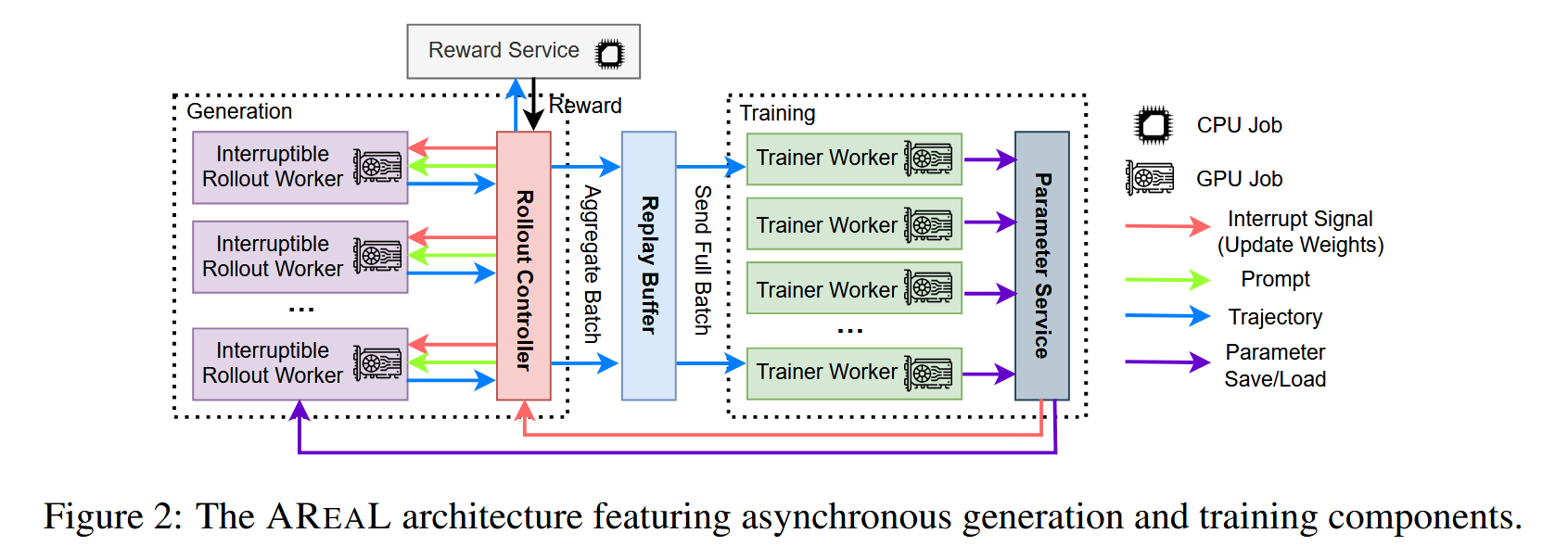
- Interruptible Rollout Worker: Handles two types of requests:
- The
generaterequest generates responses given prompts - The
upload_weightsrequest interrupts all ongoing generations and loads parameters of new versions. Upon the interruption, the rollout workers discard KV caches computed by old weights, and re-compute them using the new weights.
- The
- Reward Service.
- Trainer Workers: Continuously sample from the replay buffer, accumulating data until reaching the configured training batch size, then perform PPO updates.
- Rollout Controller:
- Reads data from the dataset and invokes the rollout worker’s generate request.
- The received response is then sent to the reward service to obtain the reward.
- The trajectory, along with the reward, is stored in the replay buffer, waiting to be trained by the model worker.
- Calls the rollout worker’ to update weights.

Staleness-aware training
- Introduce a hyperparameter η representing the maximum permitted staleness in each training batch for stalenessaware training.
- In particular, when η = 0, our system degenerates to synchronous RL with all training samples generated by the current policy.
Decoupled PPO Objective


- The main difference between the asynchronous PPO objective in Equation 5.
- 当不发生clip的时候,asynchornous PPO和conventional PPO的目标函数是完全一致的
- In asynchronous training, using the behavior policy as the proximal policy will pull the latest policy towards the old-version and low-quality policies, thus slowing down model improvements.
- By employing a recent policy as the proximal policy, model updates happen within the trust region around the high-quality proximal policy.
Experiments
- Implementation
- Implement AREAL using Python and PyTorch built upon the ReaLHF framework.
- Combines SGLang v0.4.6 for generation serving with Megatron-Core v0.11.0 as the training backend
- Configurations
- Model: R1-Distilled-Qwen.
- Dataset:
- Math: Open-source dataset from DeepScaleR
- Coding: Open-source dataset from DeepCoder
- Staleness: η = 4 for coding and η = 8 for math.
- Resource allocation: 3/4 of the devices for inference.
- Main results on AIME24 and LiveCodeBench:
- 2.77x speedup without performance degradation
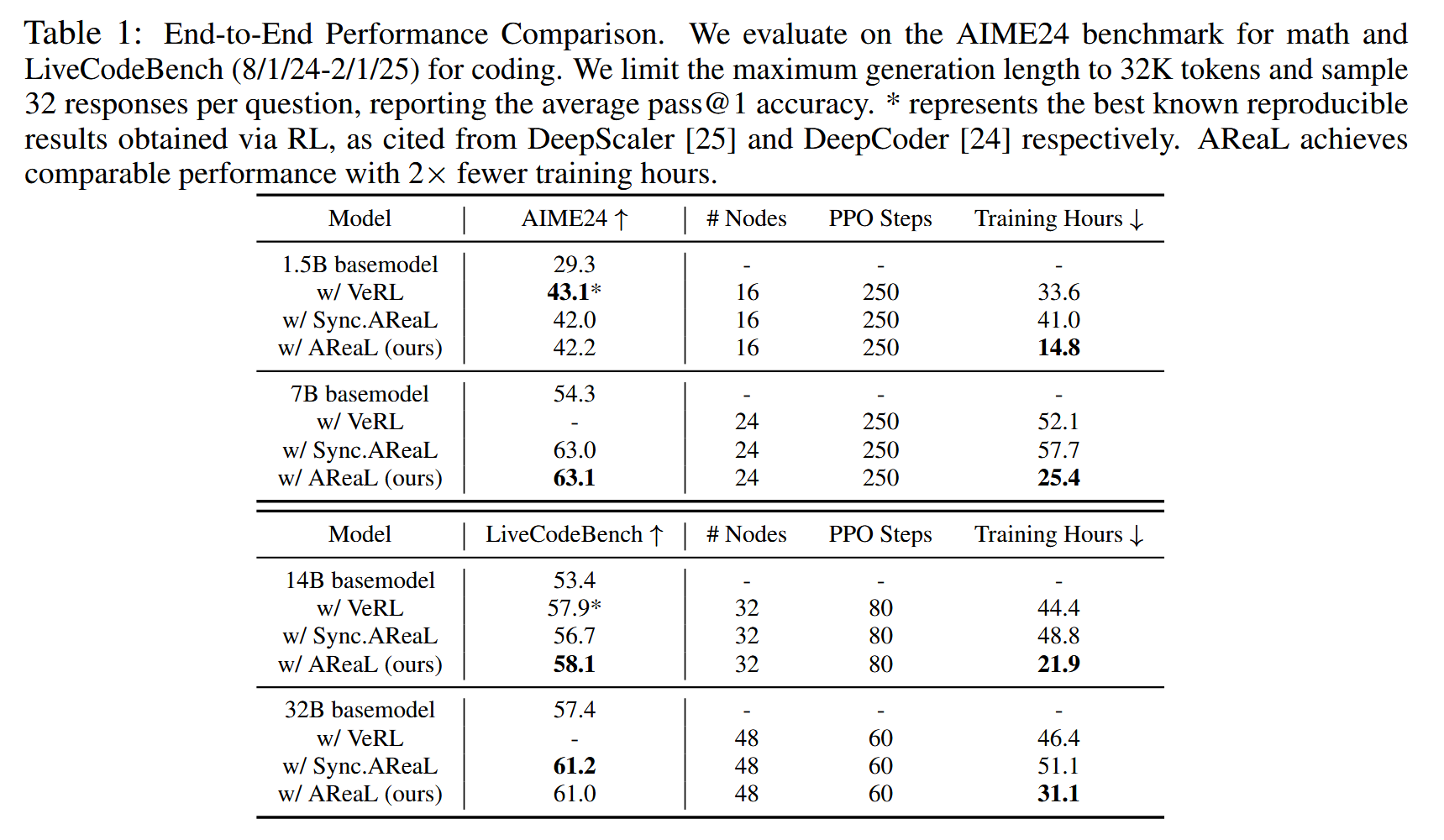
- Ablation studies:
- Effectiveness of decoupled PPO Objective
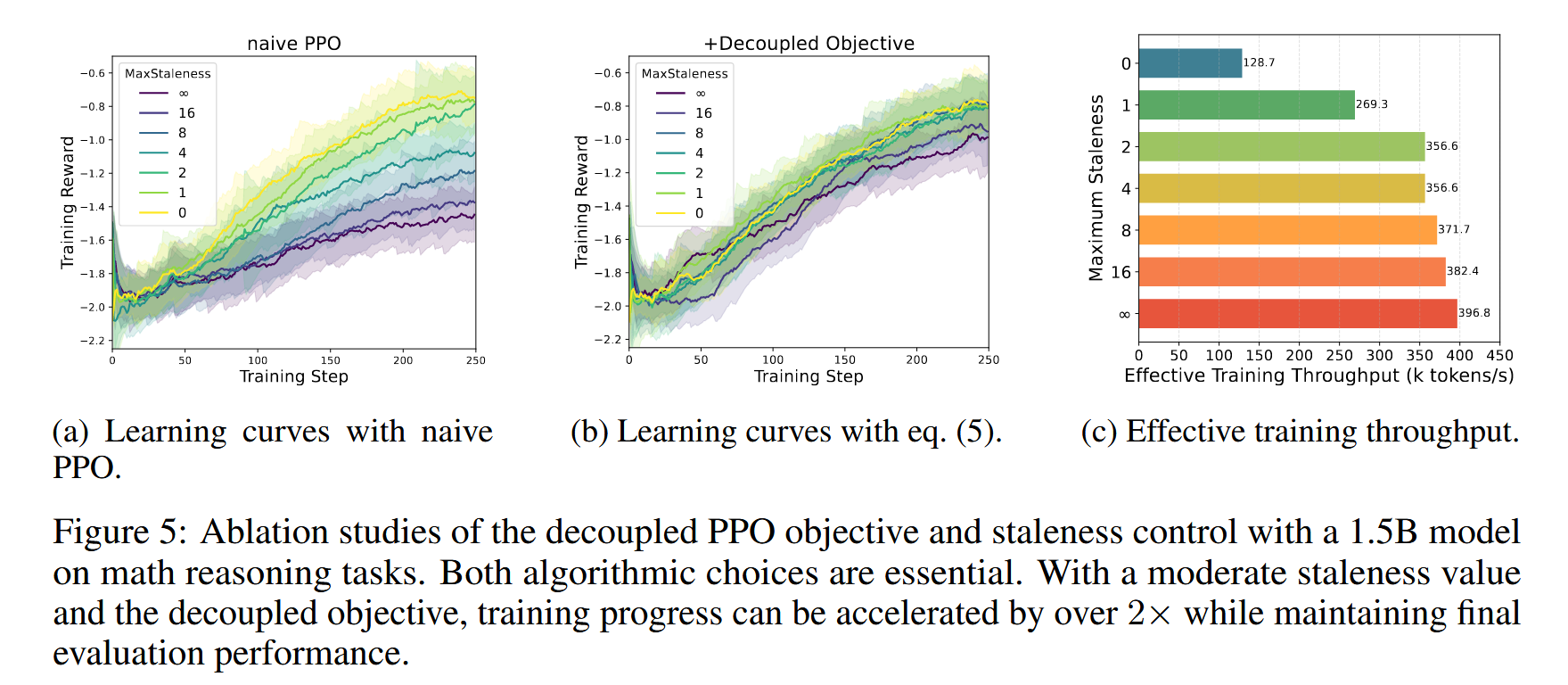
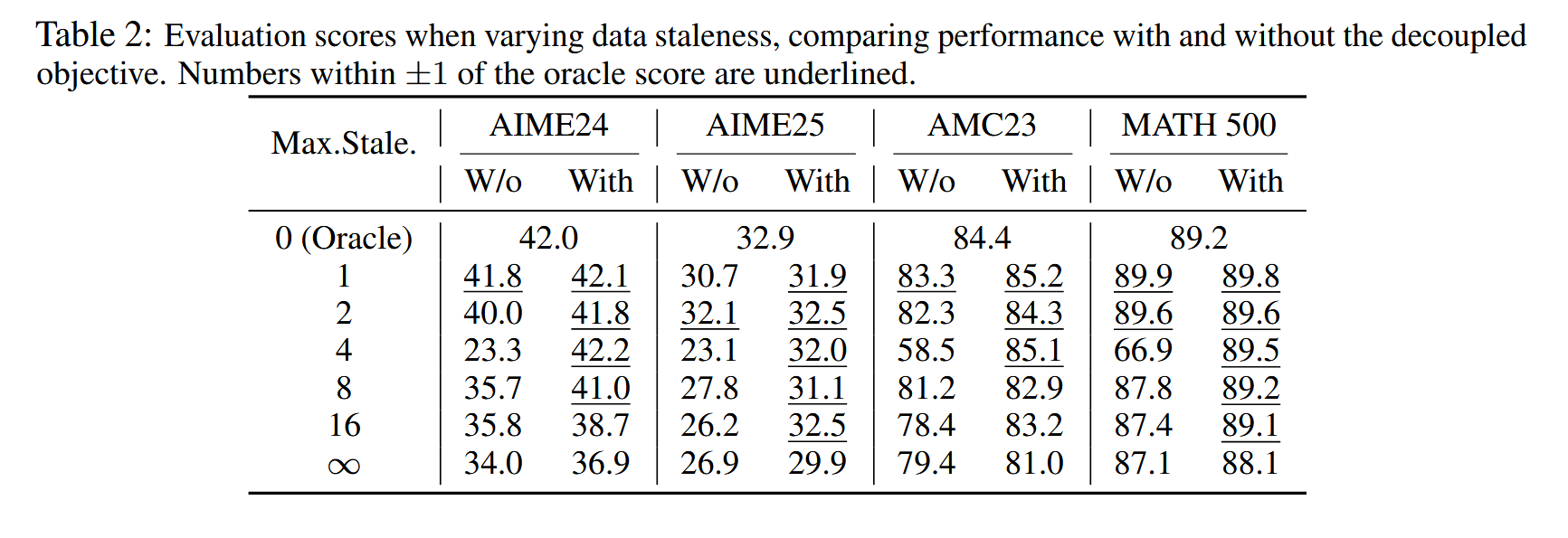
- Interruptible generation:
- Without interruptible generation, the controller must wait for the longest response
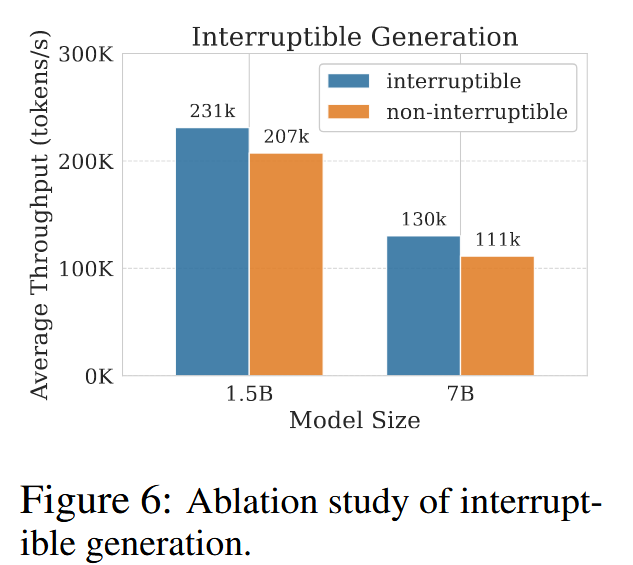
Conclusion
- This paper introduces AREAL, a fully asynchronous system designed for efficient large-scale reinforcement learning (RL) training.
- Contribute several algorithmic innovations, including staleness-aware training and a decoupled PPO objective, which enable efficient and stable PPO training in asynchronous environments.